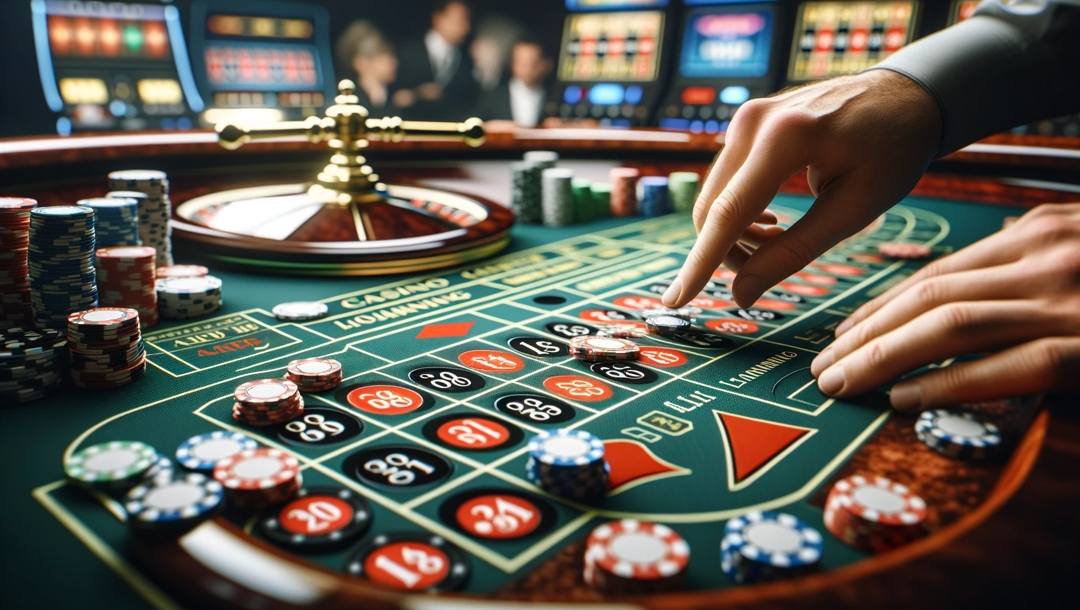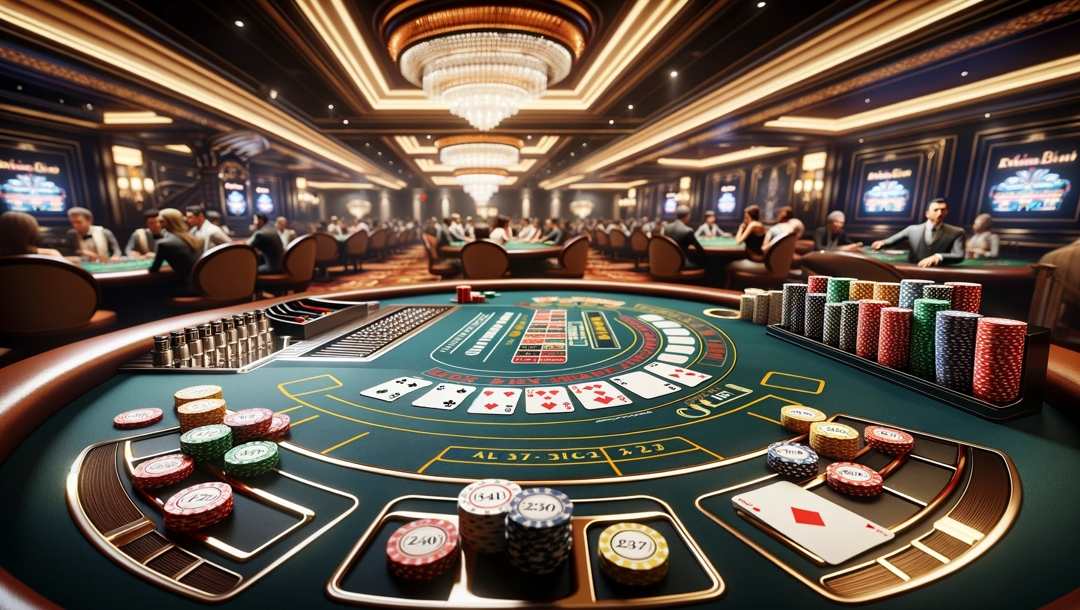This guide will help you to understand what fold equity is, the mathematical side of it and how to quantify and capitalize on it.

Improving your poker strategy is not just about focusing on your own game. Learning how to win poker tournaments involves an in-depth strategy that goes far beyond the cards in your hand. From how opponents bet on specific hand ranges to their playing personalities, experienced players get their edge from the information they collect throughout a game – you must be as active when it’s not your turn. Too often, a player’s strategy to deal with hands – when they should fold and when they should raise – is based solely on the probability of theirs being the strongest hand. What is lacking in this strategy is an awareness of the opposing players – understanding this is what separates the good from the great.
Bluffing is also common practice in the hope of fooling another player into thinking you have a stronger or weaker hand than you do. But not many poker players (whether they play poker online and/or live poker tournaments) know how to manage their fold equity. Additionally, not many players know that it should form part of their poker strategy. This guide will help you to understand what fold equity is, the mathematical side of it and how to quantify and capitalize on it.
What is fold equity?
Firstly, what is folding? Folding is the process of handing in your cards to the live dealer and not continuing with the round. Knowing when to fold is crucial to an economical and profitable game, even when you have good hands. This is where the external information of your opponents and hand ranges come into play. Sure, you may have a good hand, but your competitor may have a better hand.
To put it simply, fold equity is a subjective calculated percentage of the likelihood that you can make an opposing player fold. If an opposing player folds, you’ll win the pot uncontested. If you can get opposing players to fold often, you’ll start to increase your profits drastically. After all, the more players who fold during the round, the higher your chance of success. Identifying the different factors involved in building your equity will help you to know how to adjust your strategy – whether you enjoy a game of poker online or with friends and family.
Factors involved
There are many factors that will influence your equity in poker games online and in person. For starters, if you raise 100% of the time, your equity will be non-existent. The reason for this is that your opponents will know that you raise even when you have a bad hand. If you fold on bad hands, it shows that you know when to take risks and when you shouldn’t. Remember, fold equity in poker is your social currency that indicates that your hand is strong when you raise.
Therefore, you can’t bluff too often, otherwise opponents may catch onto your strategy. Once players understand your playing style, the rest of the game becomes tedious – the trick is to remain spontaneous. In poker, a fold will often occur when players predict you to have stronger cards, so it’s important to remain elusive. If you continuously bluff, your equity won’t be very high. What this means in practice is that your opponent might match your raise because they believe you’re bluffing. This is not ideal. What you’re aiming for with a good bluff is for the opposing player(s) to fold.
Finding a good balance can begin by showing opposing players that you know a good hand from a bad hand. This makes your opinion on whether to raise or call more respected. Every player will vary in terms of their aggression and optimism, especially those who play poker online, so this balance will be up to you. The main point is that the more you raise and lose, the lower your equity will be.
The number of chips you have will also impact your equity. Your chip stack will help to formulate your pot equity, which will be explained in greater detail later in this guide. For now, it’s important to know that if you don’t have a lot of chips, your fold equity will be massively important to your profitability over the long term. Taking both equities into consideration will turn your bluff into a semi-bluff. In other words, more of a calculated risk than a plea to lady luck.
As important as knowing your table image and your chips in relation to your bet sizes and the pot is studying your opponents. After all, they are the players you want to fold. They, too, will give cues for how they bet, how they bluff and if they are conservative or aggressive. Knowing who you’re playing against will help you to know when to push them to fold.
While it’s easy to study one or two opponents, it gets more difficult when there are more players at the table. If the table is crowded, your equity will be lower because there could be at least one person at the table who calls you. It’s important to factor in the table size when considering how to use your equity. A good tip is to start utilizing fold equity strategy in the later stages of a game and allow others to make mistakes and call bluffs in the early rounds – otherwise it may not be as effective.
How to calculate it

Now that you know what factors influence your equity, let’s look at how to calculate it. The first thing to remember is that it’s not an exact science. As you would have seen from the factors that influence it, your equity can change from hand to hand.
There are many different websites that offer a calculator to work out your fold equity. Many can be used during games of online poker. At the base of all of them is the following formula: the likelihood your opponent(s) will fold x gain in equity if the opponent folds.
As you can tell from the factors and the formula, there are a lot of variables and estimations at play. Learning how to quantify the formula helps to understand it further.
How to quantify the formula
In the formula, ‘likelihood your opponent(s) will fold’ refers to an estimated percentage that the opponent is folding. You might not know this from the first hand, but over time you’ll see if an opponent is conservative or aggressive. You might, for example, see that they fold on average 1 out of every 5 hands, giving them a 20% fold percentage. In contrast, if you notice a player folding the majority of hands and only betting when receiving good cards, you then gain a good understanding of what they may have based on the community cards dealt. Try not to fall into a clear betting cycle, as opponents will identify this and exploit you accordingly. This means it’s important to bet aggressively and defensively – don’t do one considerably more than the other.
The ‘gain in equity if opponent folds’ refers to the percentage that your opponent has in relation to you. In other words, if you have a 30% chance of winning with your hand, your opponent will, by default, have a 70% of winning. So, in that case, you would ‘gain’ 70% if your opponent folds.
In practice, you would then complete the formula as follows: 20% x 70% = 14%. So in this example, 14% means that there is a low likelihood that you will make your opponent fold their hand.
Capitalizing on your equity

Using your fold equity is important when it comes to profitability. For example, if you have an 80% chance of winning based on your hand, then your opponent has a 20% chance of winning. Although your opponent’s percentage is low, they could still win 1 out of 5 hands. To squash those odds, you will try to get your opponent to fold so that you win 5 out of 5 hands. So, to reiterate, what does a fold mean in poker? It creates an opportunity to scare off opponents, increase your chances of success and steal pots.
Apart from using it as an aggressive tactic, it can also be used in a wider strategy for profitability. To do so, you need to understand your pot equity as well.
Without going into too much detail, pot equity is a percentage amount of the pot that belongs to you. It is calculated as follows: pot equity = (pot size x percentage chance of winning) – (minus) the number of chips you put in.
Your ‘percentage chance of winning’ is based on the strength of your hand. While this might be a challenging equation to complete on the fly, you can at least have a rough idea of what your pot equity is using this formula.
Now that you have both a field and a pot equity, you can complete the profitability formula: profitability = pot equity + field equity. As you can see, the two equities can compensate for the other, depending on the situation.
For example, if you’re playing online poker, potentially in one of the live poker tournaments, and your online poker opponent folds easily, you won’t need to use as much pot equity. You could bluff more easily. Similarly, if you have a lot of pot equity, you stand a good chance of winning by simply making your draw.
Having knowledge of both your field and pot equity helps you turn your bluff into a semi-bluff. While a bluff leaves much to chance, a semi-bluff is more of a calculated risk. It’s a great addition to your online poker strategy, especially if you’re wondering how to win poker tournaments more regularly.
Play poker on BetMGM
The best way to understand field equity is to use it the next time you play a game of poker online or in person.
With an array of poker variations in several buy-in amounts, register with BetMGM for the best online poker experience, or try out our extensive range of casino games, from blackjack and roulette to slots and sports betting.


